Copyright © Rogue Amoeba Software, Inc. All rights reserved.
This article provides details on background processes used by Audio Hijack.
On MacOS 13 (Ventura) and higher, options for managing background processes are organized in the System Settings application. Two types of background processes are controllable in MacOS:
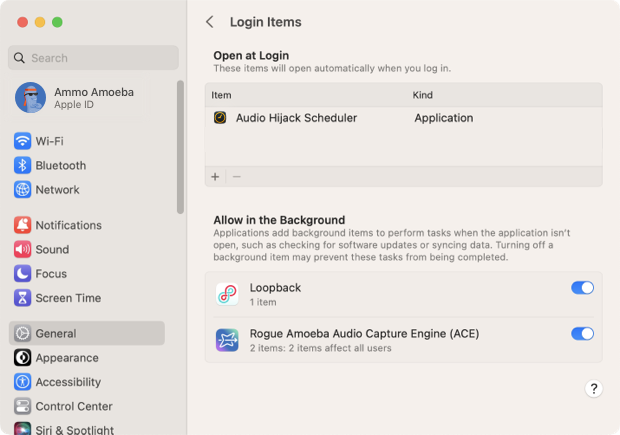
Audio Hijack has two possible background processes, one required at all times, and the other only required if you use timers.
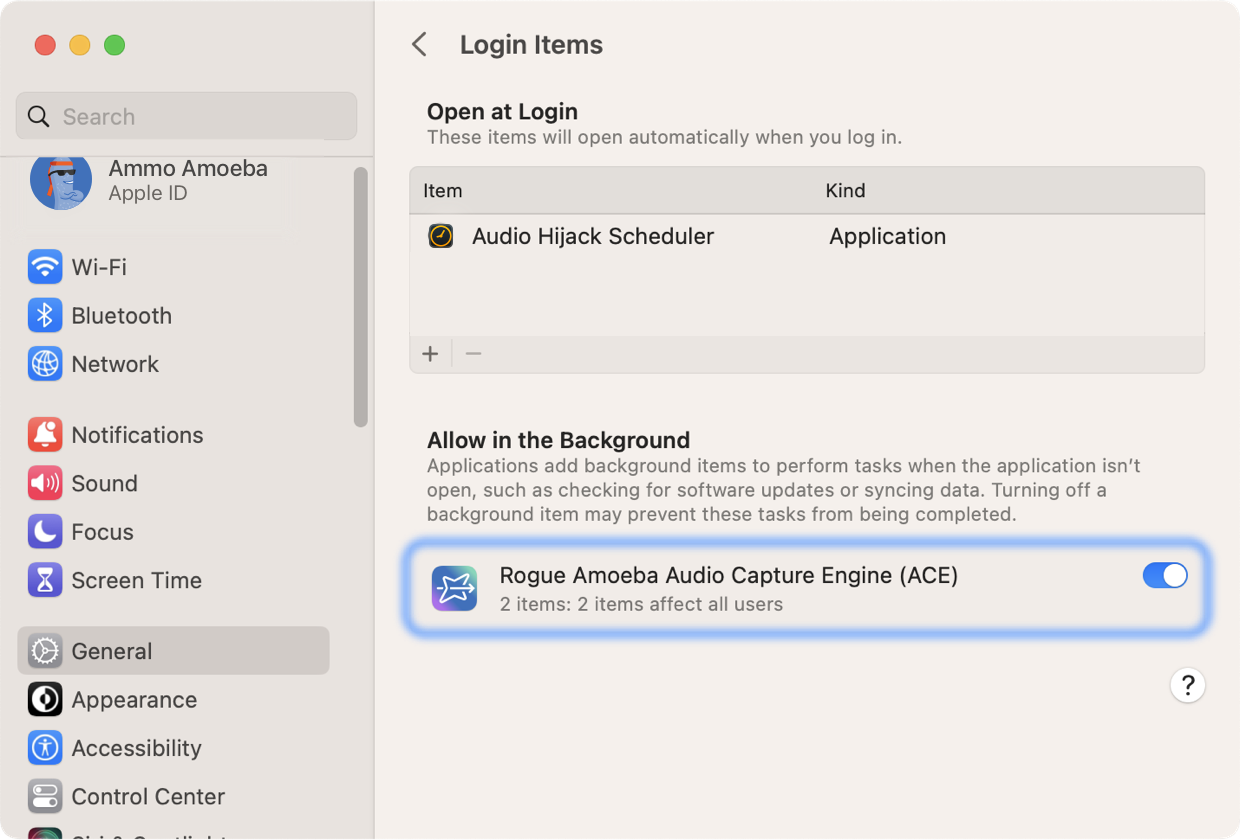
When you first run Audio Hijack, it will prompt you to install Rogue Amoeba’s Audio Capture Engine (ACE) component. This essential technology allows Audio Hijack to access and control audio on your Mac.

Audio Hijack needs the ACE process to be enabled in the background to function correctly. If it’s disabled, you’ll be prompted to re-enable it when Audio Hijack is launched. See the Re-enabling background items section below for more detailed instructions.
Audio Hijack also has a helper app called “Audio Hijack Scheduler” which is installed when you use the app’s timer functionality, to ensure that your sessions run on the specified schedule. This application keeps track of timers created by Audio Hijack, working with the power management system in MacOS to prepare your Mac to automatically launch Audio Hijack so it’s ready to start that scheduled session. This is shown in the Open at Login table.
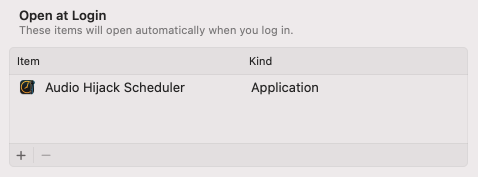
The ACE component must be allowed to run in the background for Audio Hijack to function properly. If it’s disabled, you’ll be alerted to re-enable it when Audio Hijack is launched.
Re-enabling a background item is easy, and can be done in just a few seconds.
From the warning prompt in Audio Hijack, click the Open System Settings link.
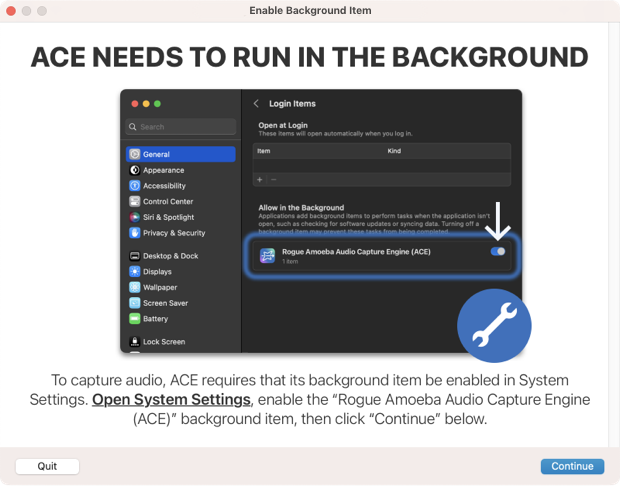
Alternately, open the System Settings app, click the General option on the left side, then click the the Login Items option.
Find ACE listed in the Background Items section, and click the switch to re-enable it.
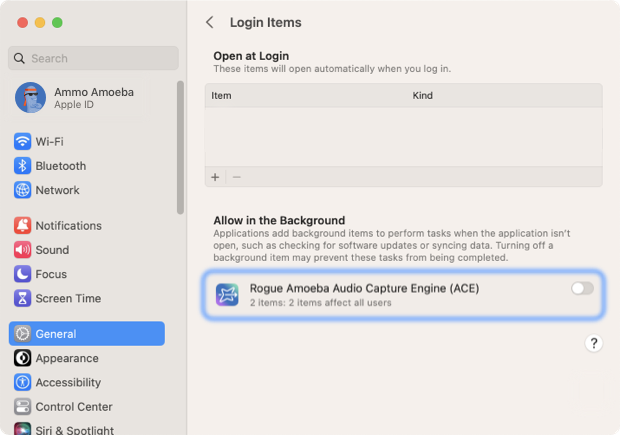
You’ll be prompted to enter the username and password for an administrator account on your Mac, to authorize the change.
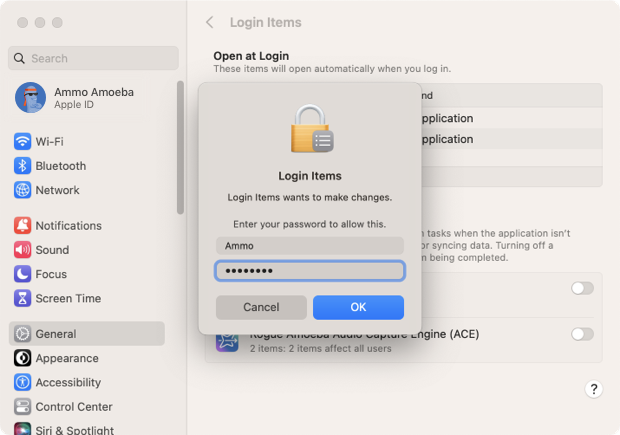
Once complete, return to the app to continue through the process.
Audio Hijack will now be able to launch and run as expected.